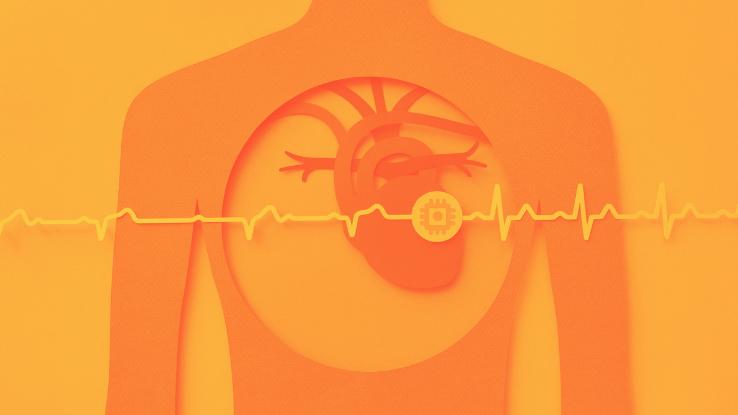
A myocardial infarction, commonly known as a heart attack, occurs when the blood supply to the heart is interrupted. Historically, this condition was thought to primarily occur in men, but recent studies suggest that folks of all genders, including women, are just as susceptible to cardiovascular disease. However, since much of the historic research on heart attack symptoms focuses on men, other symptoms, such as those particular to women, have been overlooked and understudied.
With this in mind, understanding various symptoms associated with myocardial infarctions can help a person experiencing a heart attack receive the care they need in a timely manner.
Symptoms of a Heart Attack
The symptoms of a heart attack may not always be obvious. However, common, identifiable symptoms of a heart attack may include:
- Angina: Angina describes the feeling of pain, discomfort, pressure, or tightness in the center of the chest associated with restricted blood flow to the heart. It commonly lasts for several minutes or more, or presents intermittently. The symptoms of angina may resemble the symptoms felt in severe heartburn. In a heart attack, these feelings do not go away with rest.
- Pain or Discomfort in the Upper Body: A person experiencing a myocardial infarction may feel intense pain in the upper body, including the arms, left shoulder, back, neck, jaw, or upper stomach. One of the “classic” symptoms of a heart attack is pain radiating down the left arm.
- Difficulty Breathing: Shortness of breath or difficulty taking in a full breath are commonly seen symptoms during a heart attack. In some cases this may be the only symptom.
- Sweating: A person experiencing a heart attack may break into a cold sweat during or prior to the attack episode. Their skin may become wet or clammy.
- Gastrointestinal Symptoms: Indigestion, heartburn, nausea, and vomiting are all associated gastrointestinal symptoms of a heart attack.
- Dizziness: A person having a heart attack may start to feel extremely light-headed, dizzy, or weak in the extremities. They may even collapse or lose consciousness.
- Variations in normal heartbeat rhythm: One may experience a rapid or irregular heartbeat, which may be felt as palpitations. Feelings of anxiety are often associated with a rapid heart rate.
Recognizing Heart Attack Signs in Women
The common symptoms listed below may not fully represent the spectrum of symptoms a person can experience during a heart attack. While people of all genders may feel an intense chest heaviness during a heart attack, it is not uncommon for some women to experience a heart attack without that heaviness.
In fact, some women may only experience shortness of breath and, perhaps, a slight chest pain coupled with lightheadedness. In fact, women are more likely than men to experience a heart attack with what have been dubbed “less-typical” symptoms. Other less-typical symptoms include the following:
- Upper back or shoulder pain
- Jaw pain or pain spreading to the jaw
- Pressure in the center of the chest
- Sweating
- Light-headedness or dizziness
- Unusual fatigue — as if they completed a strenuous cardiovascular exercise
If you experience any of the symptoms listed above, you should seek medical care. However, a physician will likely be unable to diagnose a heart attack based on your physical symptoms alone. Typically, doctors will run a series of tests and order lab work to confirm that a myocardial infarction has occurred. Moreover, when it comes to diagnosing a heart attack, knowing your medical history and risk factors can prove extremely helpful to your physician.

Risk Factors for Heart Disease Among Women
Across the board, risk factors for heart disease include elevated cholesterol levels, high blood pressure (or hypertension), and obesity. However, some risk factors are more significant for women. These risk factors include:
- Smoking Cigarettes or Tobacco Products: Smoking is known to increase any individual’s risk of developing heart disease. If you smoke currently, consider a nicotine-substitute product such as a transdermal nicotine patch regime to help you wean yourself off cigarettes.
- Lack of (or Decreased) Physical Activity: Regular physical activity is known to improve a person’s cardiovascular and overall health. The Centers for Disease Control and Prevention (CDC) recommends at least 30 minutes of cardiovascular exercise five times per week for the average adult.
- Having Diabetes: Women who have diabetes demonstrate an increased risk of heart disease.
- Family History: A woman with a family history of heart disease has a higher likelihood of developing cardiovascular disease, especially if that person is an immediate relative.
- Complications Arising From Pregnancy: At times, pregnancy can be associated with a variety of complications, which range greatly in severity from slightly elevated blood pressure to preeclampsia or gestational diabetes. These complications can raise a person’s risk of developing heart disease due to the additional stress placed on their cardiovascular system during pregnancy. With this in mind, it’s essential that a person who is pregnant receives adequate prenatal care to ensure their health remains stable both during and after their pregnancy.
- Being in Menopause: Small vessel cardiovascular disease has been linked to decreased estrogen levels, often seen during menopause for some women.
Heart Disease Prevention
Remaining aware of your risk for cardiovascular disease is essential. With that awareness, you can try to make healthy diet and lifestyle choices, thus minimizing your overall risk. Some ways to reduce risk include:
- Quitting Smoking: If you are a smoker, try methods of quitting such as using transdermal nicotine patches or lozenges. Smoking is a major risk factor for heart disease.
- Making Healthy Diet Choices: Being overweight or obese, as well as having a diet high in saturated fats are all risk factors for heart disease. Try making small, gradual changes, such as opting for filling your dinner plate with more vegetables or incorporating foods high in fiber into your diet.
- Increasing Your Activity Level: If you sit at a desk all day, look for ways to move your body, perhaps by taking the stairs instead of the elevator or taking a walk around the office parking lot at lunch. Physical inactivity can increase your risk for heart disease.
- Seeing Your Doctor Regularly: Schedule a yearly checkup with your doctor to ensure you are in good health. If you take medications for something like high blood pressure or high cholesterol, work with your doctor to remain in control of your levels.
- Listening to Your Body: If you have chest pain or other symptoms of a heart attack that last longer than five minutes, don’t ignore them. Seek emergency care to rule out a heart attack.
Remember: physicians who treat heart attacks often state that “time is muscle” — which means that recognizing the symptoms of a heart attack sooner rather than later can greatly improve your odds of both survival and recovery.
Resource Links:
- “Heart Attack Symptoms in Women” via American Heart Association
- “Heart Attack Symptoms, Risk, and Recovery” via Centers for Disease Control and Prevention (CDC)
- “Myocardial infarction in women: promoting symptom recognition, early diagnosis, and risk assessment” via National Library of Medicine, NIH
- “Women’s early warning symptoms of acute myocardial infarction” via National Library of Medicine, NIH
- “The heart attack gender gap” via Harvard Health Publishing, Harvard Medical School





